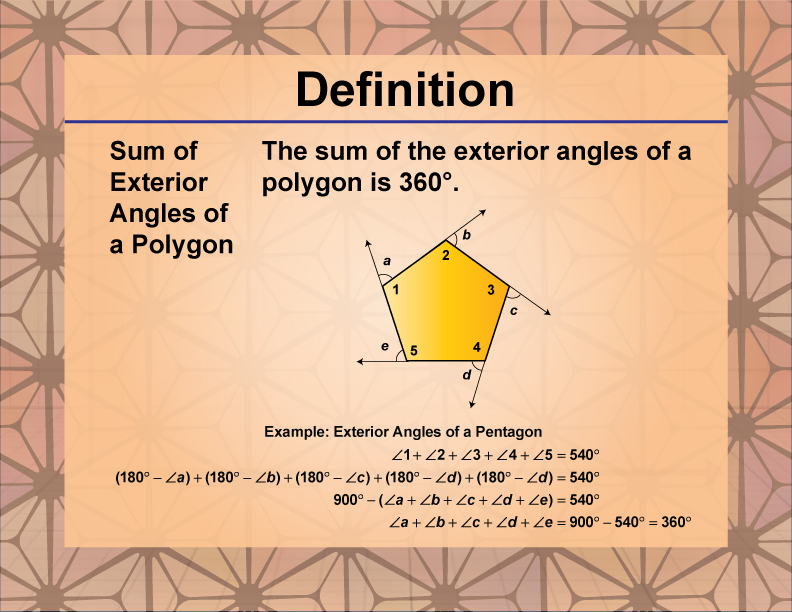
Display Title
Definition--Polygon Concepts--Sum of the Exterior Angles of a Polygon
Display Title
Sum of Exterior Angles of a Polygon

Topic
Polygons
Definition
The sum of the exterior angles of any polygon, regardless of the number of sides, is always 360°.
Description
The sum of exterior angles of a polygon is a fundamental concept in geometry that holds true for all polygons, regardless of their shape or number of sides. This property is crucial for understanding the nature of polygons and their relationship to circular motion. Exterior angles are formed by extending each side of the polygon and measuring the angle between this extension and the adjacent side.
The significance of this concept lies in its universality and its connection to other geometric principles. It demonstrates the relationship between polygons and complete rotations, as 360° represents a full turn. This property is particularly useful in various mathematical proofs and practical applications, such as navigation, architecture, and computer graphics. Understanding exterior angles also aids in comprehending the internal structure of polygons, as there is a direct relationship between exterior and interior angles.
Moreover, this concept serves as a bridge between elementary geometry and more advanced topics like trigonometry and calculus. It provides a foundation for exploring more complex geometric shapes and their properties, making it an essential component of mathematical education and spatial reasoning development.
For a complete collection of terms related to polygons click on this link: Polygons Collection.
| Common Core Standards | CCSS.MATH.CONTENT.5.G.B.3, CCSS.MATH.CONTENT.5.G.B.4, CCSS.MATH.CONTENT.3.G.A.1, CCSS.MATH.CONTENT.3.MD.D.8, CCSS.MATH.CONTENT.6.G.A.1, CCSS.MATH.CONTENT.6.G.A.3, CCSS.MATH.CONTENT.HSG.CO.A.3 |
|---|---|
| Grade Range | 3 - 8 |
| Curriculum Nodes |
Geometry • Polygons • Definition of a Polygon |
| Copyright Year | 2021 |
| Keywords | polygon, definitions, glossary term |